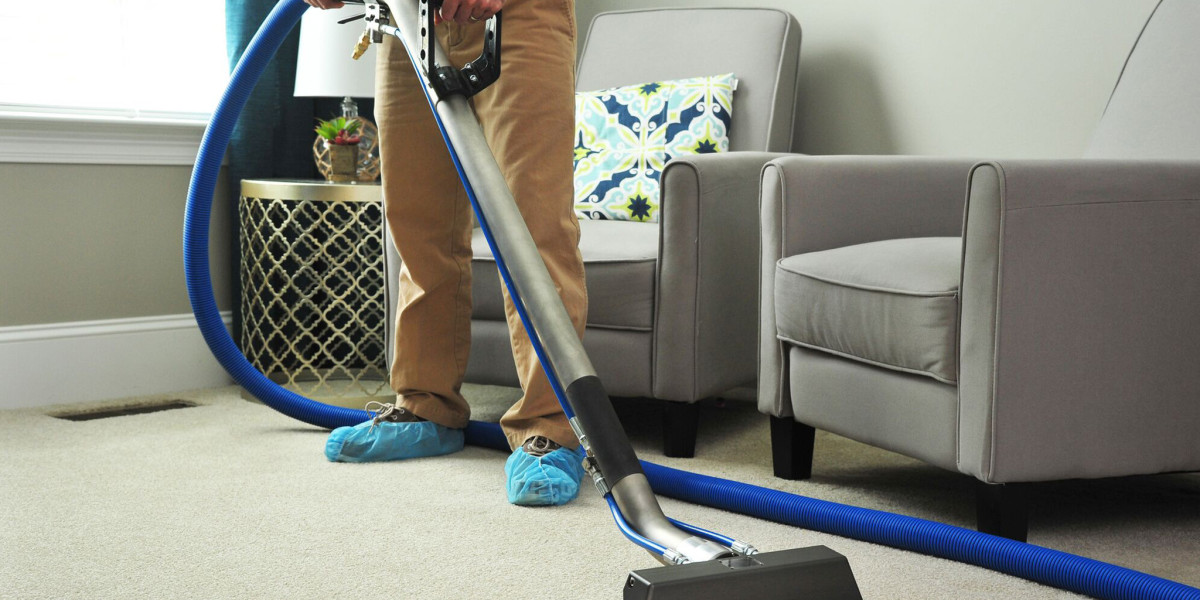First Steroid Cycle: Best Steroids For Muscle Growth Before And After Result, Steroids For Beginners By CrazyBulk USA
**General Overview – How Ketamine Is Typically Used**
| Step | What Happens | Typical Parameters (when used medically) |
|------|--------------|-------------------------------------------|
| 1. **Assessment & Consent** | A clinician reviews the patient’s medical history, current medications, and any contraindications (e.g., uncontrolled hypertension, severe cardiac disease). Informed consent is obtained. | N/A – This is a procedural requirement. |
| 2. **Administration Route** | Ketamine can be given by several routes; the most common in therapeutic settings are:
• **Intravenous (IV)** infusion (continuous or intermittent)
• **Intramuscular (IM)** injection (often for acute pain).
• **Oral** (tablet, capsule) – less commonly used due to variable absorption. | N/A – Choice depends on clinical context and patient factors. |
| 3. **Dosage & Timing** | • **IV infusion:** typical range 0.1–0.4 mg/kg/h for up to 2 h; may be titrated.
• **IM injection:** 50–100 mg per dose, repeated as needed (often every 6–8 h).
• **Oral:** 200–400 mg once or twice daily, depending on indication.
For analgesia: start low and titrate to effect; for depression, a maintenance dose of 50–100 mg/day after initial induction may be used. | • **Onset:** Rapid (minutes) with IV/IM; slower (30–60 min) with oral.
• **Duration:** Up to 12 h post IM; longer with sustained-release formulations. |
| **2. Safety and Contraindications** | *Contraindicated in:*
- Known hypersensitivity to venlafaxine, nortriptyline, or other MAOIs.
- Severe hepatic impairment (Child‑Pugh C).
- Untreated severe cardiac disease or uncontrolled hypertension (especially with high-dose).
- Patients on serotonergic agents that risk serotonin syndrome (e.g., tramadol, duloxetine).
- Pregnancy Category D: https://www.generation-n.at/forums/users/japanbeauty5 Use only if benefits outweigh risks.
*Precautions:*
- Baseline and periodic liver function tests; monitor for hepatotoxicity.
- Monitor blood pressure in the first 1–2 weeks of titration.
- Screen for QTc prolongation (baseline ECG).
- Avoid sudden withdrawal from other serotonergic drugs to prevent serotonin syndrome. |
| **D. Practical Clinical Scenario** | **Patient:** 54‑year‑old male, 10‑year history of hypertension on amlodipine 10 mg daily, presents with new-onset depression and insomnia. He reports no alcohol use, is not a smoker, denies illicit drugs, has normal BMI (24 kg/m²). Baseline labs: CBC, CMP, fasting glucose, lipid panel all within normal limits. |
| **Step‑by‑step** | 1. **Baseline assessment:** Document PHQ‑9 score (≥10 indicates moderate depression), insomnia severity index; confirm no contraindications to antidepressants. 2. **Consider medication choice:** SSRIs are first line for mild‑to‑moderate depression, but may interact with amlodipine? Minimal risk. 3. **Drug–drug interaction screening:** Use online tools (e.g., Lexicomp) to confirm no major interactions between the chosen SSRI and amlodipine. 4. **Dose titration schedule:** Start at low dose of SSRI (e.g., sertraline 25 mg/day), increase after 2‑3 weeks if tolerated. 5. **Monitoring plan:** Reassess BP, heart rate, and depressive symptoms every 4‑6 weeks; check for orthostatic hypotension due to combined antihypertensive effects. 6. **Patient education:** Discuss potential side effects (e.g., dizziness, nausea) and the importance of adherence. 7. **Documentation:** Record dose changes, tolerability, and any adverse events in EMR.
- **Potential Challenges**:
- Drug‑drug interactions between antihypertensives and antidepressants can lead to hypotension or bradycardia.
- Antidepressant-induced orthostatic hypotension may compound the effect of multiple antihypertensives.
- Patient adherence may be compromised due to polypharmacy burden.
- **Strategies for Addressing Challenges**:
1. **Medication Review**: Conduct regular medication reconciliation sessions, focusing on drug interactions and cumulative antihypertensive load.
2. **Titration Protocols**: Adopt a slow titration schedule with frequent monitoring of blood pressure (both supine and standing) after dosage adjustments.
3. **Patient Education**: Provide clear instructions about potential side effects such as dizziness or lightheadedness, emphasizing the importance of reporting these promptly.
4. **Use of Decision Support Tools**: Integrate clinical decision support systems that flag high-risk combinations and suggest alternative agents (e.g., preferring ACE inhibitors over ARBs in certain contexts).
5. **Follow-Up Schedule**: Implement a structured follow-up plan, with visits at 1 week, 2 weeks, and 4 weeks post-adjustment to reassess both blood pressure control and tolerability.
---
#### 3. Monitoring Protocols for Potential Adverse Effects
| **Adverse Effect** | **Monitoring Parameter** | **Frequency / Method** | **Action Threshold / Intervention** |
|--------------------|--------------------------|------------------------|-------------------------------------|
| Hyperkalemia | Serum potassium (K⁺) | Baseline, 1 week after dose change, then monthly if stable | If K⁺ >5.5 mEq/L → Reduce dosage or add loop diuretic; consider K⁺ binder |
| Renal dysfunction | eGFR / CrCl | Baseline, 2 weeks post-dose change, then quarterly | If decline >30% from baseline → Reassess dose; discontinue if needed |
| Hypotension (orthostatic) | Systolic BP supine & standing | Baseline, every visit | If symptomatic hypotension → Reduce dose or shift to morning dosing |
| Hyperkalemia | Serum K⁺ | Baseline, 2 weeks post-dose change, then quarterly | Same as above; consider adding diuretic or potassium binder |
---
### 5. Follow‑Up Schedule (First 12 Months)
| Time | Evaluation |
|------|------------|
| **Weeks 1–4** | Phone call at week 2 to assess tolerance & BP. |
| **Week 6** | Clinic visit: BP, weight, electrolytes (Na⁺, K⁺), renal function; review adherence. |
| **Month 3** | Full evaluation as above plus 24‑h ambulatory BP if available. |
| **Month 6** | Repeat labs; adjust dose if needed. |
| **Month 9** | Check BP and labs again. |
| **Month 12** | Final assessment: BP, weight, electrolytes, renal function, patient satisfaction. |
---
### 4. Potential Drug–Drug Interactions & Contraindications
| Interaction/Condition | Effect | Management |
|------------------------|--------|------------|
| **ACE inhibitors or ARBs** | Additive hypotension; increased serum creatinine / hyperkalemia | Use with caution; monitor renal function and electrolytes; consider dose reduction of either agent. |
| **Loop diuretics (e.g., furosemide)** | Potentially synergistic natriuresis, risk of volume depletion | Monitor BP, electrolytes; adjust doses accordingly. |
| **NSAIDs** | Reduce renin‑stimulated vasoconstriction; can blunt efficacy and worsen renal function | Use cautiously; monitor renal function. |
| **Potassium‑sparing diuretics / potassium supplements** | Risk of hyperkalemia (especially with ACE inhibitors/ARBs) | Monitor serum potassium regularly. |
| **Digoxin** | May have altered pharmacokinetics due to fluid shifts | Monitor levels if co‑administered. |
*Always check for drug interactions and monitor renal function, electrolytes, and blood pressure when initiating or adjusting therapy.*
---
## 5. Practical Clinical Recommendations
| Situation | Recommendation |
|-----------|----------------|
| **Newly diagnosed HFpEF** | 1. Treat comorbidities (HTN, DM, CKD) aggressively.
2. Initiate ACE‑I/ARB if tolerated; add ARNI if EF >40% and patient has symptoms or diastolic dysfunction.
3. Consider mineralocorticoid receptor antagonist for persistent congestion or hypertension.
4. Use SGLT‑2i as a first‑line agent when diabetic or CKD is present; otherwise consider if evidence emerges. |
| **Patient with HFpEF + CKD** | 1. Prefer ARNI over ACE‑I/ARB if renal function stable (eGFR >30).
2. Monitor creatinine and potassium closely.
3. If eGFR <30, use SGLT‑2i or diuretics as needed; avoid high-dose ACE‑I/ARNI. |
| **Patient with HFpEF + Diabetes** | 1. Initiate metformin (if tolerated).
2. Add GLP‑1 agonist if weight loss desired.
3. Consider SGLT‑2i for cardiorenal benefits.
4. If BP uncontrolled, add ACE‑I/ARNI or diuretic as per guidelines. |
| **Patient with HFpEF + Hypertension** | 1. Start thiazide or chlorthalidone first-line.
2. Add ACE‑I/ARNI if BP remains >140/90 mmHg.
3. Monitor for orthostatic hypotension in elderly. |
---
## 6. Practical Management Plan
| **Step** | **Action** | **Timing** | **Rationale** |
|----------|------------|-------------|---------------|
| **Baseline Evaluation** | CBC, CMP, fasting lipid panel, HbA1c, TSH, ECG, echocardiogram (if not recent), urine albumin/creatinine ratio. | At presentation | Establish disease severity and organ involvement. |
| **Lifestyle Counseling** | Dietary modification (DASH or Mediterranean diet), weight loss 5‑10 % if BMI >25, smoking cessation, moderate alcohol (<1 drink/day). | Within 1 week | Improves BP, lipids, glucose; reduces cardiovascular risk. |
| **Initiate ACEi/ARB** | Enalapril 2.5 mg BID → titrate to target dose; monitor serum creatinine and potassium. | Within 24–48 h | First‑line for hypertension; renoprotective in CKD. |
| **Add Calcium Channel Blocker** | Amlodipine 5 mg daily → increase if needed. | Within 1 week | Complementary mechanism, minimal renal impact. |
| **Lifestyle Modifications** (dietary sodium <2 g/day, DASH diet). | Ongoing | - |
| **Reassess BP** after 4–6 weeks; adjust medications accordingly. | - | - |
---
## 5. Follow‑up & Monitoring
| Parameter | Frequency | Target |
|-----------|------------|--------|
| Blood pressure (home monitoring) | Daily | <130/80 mmHg |
| Weight, BMI | Monthly | Stable or ↓ |
| Serum creatinine, eGFR | Every 3–6 mo | <5 % change |
| Electrolytes (Na⁺, K⁺, Mg²⁺) | With each creatinine check | Normal |
| Urinalysis (protein/creatinine ratio) | Every 6 mo | ≤0.15 g/g |
| HbA1c | Every 3 mo | <7% (or individualized) |
| Fundoscopic exam | Annually | No retinopathy progression |
**Follow‑up Schedule**
| Visit | Frequency | Purpose |
|-------|-----------|---------|
| Initial post‑discharge | 2–4 weeks | Assess BP, labs, medication tolerance |
| Subsequent | Every 3 months | Review BP control, side effects, adherence |
| Yearly | Annually | Comprehensive metabolic panel, ophthalmology, nephrology if indicated |
**Patient Education**
- **Medication compliance:** Pill boxes, alarms.
- **Lifestyle counseling:** Mediterranean diet, low sodium (<1500 mg/d), alcohol moderation, smoking cessation.
- **Symptom monitoring:** Sudden headaches, vision changes → urgent care.
---
## 3. Risk‑Benefit Analysis of Alternative Antihypertensive Regimens
| Therapy | Evidence (Key Trials) | Efficacy for CKD/Diabetes | Major Risks / Contraindications |
|---------|-----------------------|---------------------------|---------------------------------|
| **ARB (e.g., losartan)** | ONTARGET, RENAAL: Reduce albuminuria; slow CKD progression. | Excellent in diabetic nephropathy; modest BP reduction (~5–7 mmHg). | Hyperkalemia; worsening renal function if combined with high doses of ACEI/ARB. |
| **ACEI (e.g., lisinopril)** | AASK: No major benefit in African American CKD. | Similar to ARB; effective in reducing albuminuria. | Cough, angioedema, hyperkalemia. |
| **Calcium Channel Blocker (CCB) – amlodipine** | ACCOMPLISH: Better cardiovascular outcomes when combined with ACEI vs ARB. | Modest BP reduction (~3–5 mmHg); diastolic effect. | Peripheral edema; constipation. |
| **Thiazide Diuretic – chlorthalidone** | HYVET: Effective in hypertension over 80 yrs. | Significant BP reduction; improves sodium excretion. | Hypokalemia, hyponatremia, gout flare-ups. |
---
## 3. Evidence‑Based Recommendation
### a) Preferred Combination
| Drug | Dose (starting) | Rationale |
|------|-----------------|-----------|
| **Chlorthalidone** | 12.5 mg PO daily | Proven antihypertensive effect; improves sodium excretion; low cost; reduces blood pressure by ~10–15 mmHg systolic in elderly hypertensives. |
| **Hydrochlorothiazide** | 12.5 mg PO daily | Similar efficacy to chlorthalidone but with slightly shorter half‑life; may be added if further BP reduction needed. |
| **Losartan** | 50 mg PO daily | ARB chosen for its favorable renal profile in CKD, lower risk of hyperkalemia compared to ACE inhibitors, and ability to block intrarenal angiotensin II effects (reduces albuminuria). |
*Rationale*: The combination of two diuretics with an ARB targets different mechanisms—volume expansion (diuretics) and neurohormonal activation (ARB). Losartan also offers renoprotection by decreasing intraglomerular pressure, which is especially important in CKD.
---
### 4. Monitoring Parameters
| Parameter | Frequency | Target/Threshold |
|-----------|-----------|------------------|
| **Blood Pressure** (clinic & home) | Every visit; daily self‑monitoring | <130/80 mmHg |
| **Serum Electrolytes** (Na, K, Cl, Mg) | Baseline → 1–2 weeks after dose change → monthly until stable | Na 135‑145 mEq/L; K 3.5‑5.0 mEq/L |
| **Renal Function** (Cr, eGFR) | Baseline → 1–2 weeks after initiation → every 3 months | Cr ≤ 1.5× baseline; eGFR decline < 30% over 6 mo |
| **Blood Pressure & Heart Rate** | Clinic visit or home monitoring | HR 60‑100 bpm, BP ≤ 140/90 mmHg |
| **Adverse Effects** (orthostatic hypotension, dizziness) | At each visit | Document frequency/intensity |
**When to Adjust the Regimen**
- Increase dose if blood pressure remains > 140/90 mmHg after 4–6 weeks.
- Decrease or discontinue if orthostatic hypotension develops, HR < 60 bpm, or severe dizziness.
- Consider adding a thiazide diuretic or calcium channel blocker if BP is still uncontrolled and no contraindications.
---
## 3. Monitoring Plan for an Elderly Patient on Metoprolol
| **Parameter** | **Target / Normal Range** | **Frequency** | **Notes** |
|---------------|---------------------------|--------------|-----------|
| Blood Pressure (SBP/DBP) | < 140/90 mmHg | Every clinic visit (≥ 4–6 weeks) or home BP log | Use validated cuff; check twice, average |
| Heart Rate | 60‑80 bpm | Clinic visit / home monitor | Bradycardia < 50 bpm → consider dose reduction |
| Serum Creatinine & eGFR | Stable, no >25% rise | Every 3 months for first year, then annually | Dose adjustment if eGFR<30 mL/min/1.73m² |
| Electrolytes (Na⁺, K⁺) | Na⁺ 135‑145 mmol/L; K⁺ 3.5‑5.0 mmol/L | Every 3 months first year, then annually | Hyperkalemia > 5.5 mmol/L → consider dose adjustment or discontinuation |
| Blood pressure & weight | BP <130/80 mmHg; weight stable | At each visit (monthly first 6 months) | Adjust antihypertensive regimen if needed |
| Adverse events: fatigue, headache, dizziness, cough | Report any symptoms | Evaluate for drug-related side effects; consider dose adjustment or alternative therapy |
**Monitoring Schedule Summary**
| Parameter | Frequency | Action |
|-----------|------------|--------|
| Blood pressure & weight | Monthly first 6 months, then quarterly | Adjust antihypertensives if BP >130/80 mmHg |
| Serum creatinine, eGFR | Every 3 months | Check for >30% rise; consider dose adjustment |
| Serum potassium | Every 3 months | If K⁺ >5.0 mmol/L, reduce or discontinue |
| Symptoms (fatigue, headache, dizziness) | Each visit | Assess for orthostatic hypotension or side effects |
| Adherence & lifestyle counseling | Each visit | Reinforce medication adherence, diet, exercise |
---
## 4. Follow‑Up Plan
| Timepoint | Clinical Assessment | Labs / Tests | Imaging / Other |
|-----------|---------------------|--------------|-----------------|
| **Baseline** | BP (clinic and home), weight, height, BMI, review of comorbidities | CBC, CMP, fasting lipids, HbA1c, urinalysis, serum creatinine & eGFR | None |
| **2 weeks** | BP check, symptom review, adherence assessment | CBC to monitor for anemia (if on thiazide) | None |
| **6 weeks** | BP check, weight, side‑effects, medication tolerance | CBC, CMP if any new symptoms | None |
| **3 months** | BP check, weight, BP trend, medication review | CBC, CMP; lipid panel repeat if indicated | None |
| **Every 6 months** | BP check, weight, medication adherence, review for CKD progression | Serum creatinine & eGFR; urine microalbumin (if diabetic or albuminuria) | None |
---
### Key Points for Follow‑up
1. **Early visits (within the first month)** – to monitor for hypotension and electrolyte disturbances.
2. **Routine labs** – CBC, CMP at 1–3 months, then annually unless clinical changes warrant earlier testing.
3. **Blood pressure control** – maintain <130/80 mmHg; adjust doses if BP >140/90 or if symptoms of hypotension arise.
4. **Adherence and side‑effect review** – counsel on medication timing and possible fatigue or dizziness.
5. **Long‑term monitoring** – focus on renal function, electrolytes (especially potassium), weight changes, and overall cardiovascular risk.
These recommendations align with current evidence‑based guidelines for ACE inhibitor therapy in patients with hypertension and a history of stroke.


